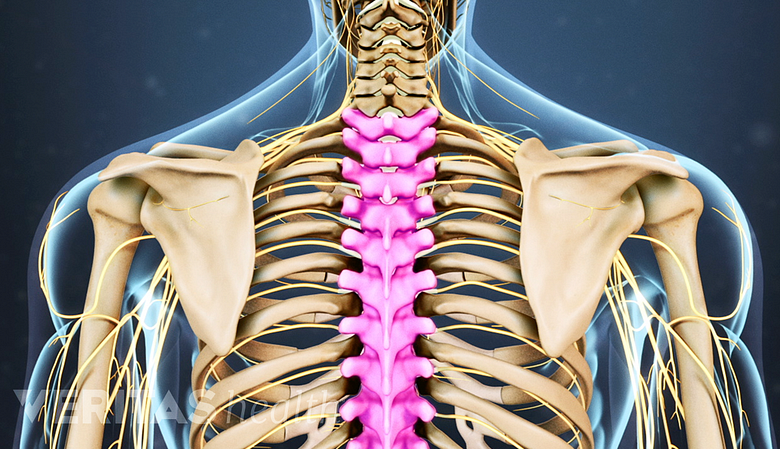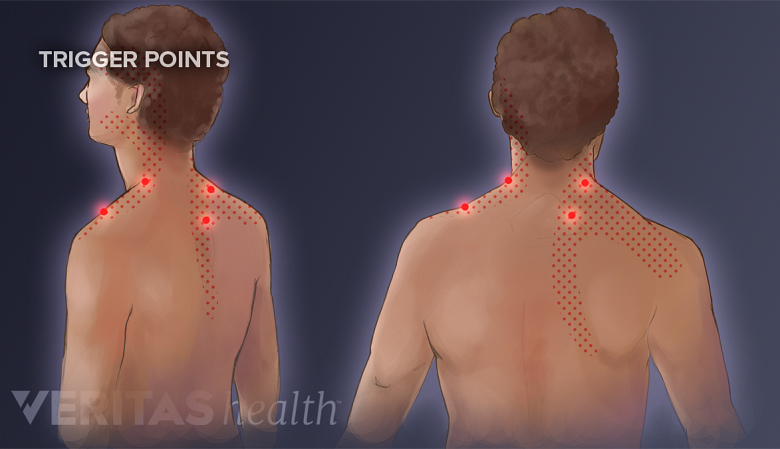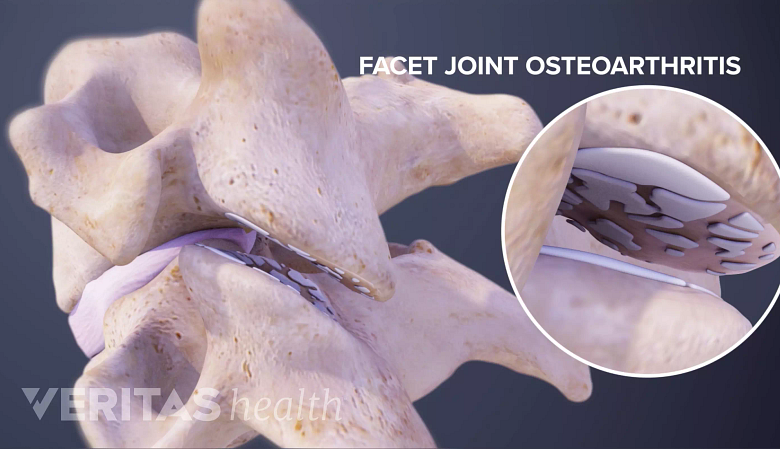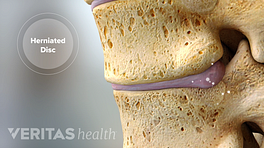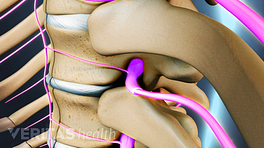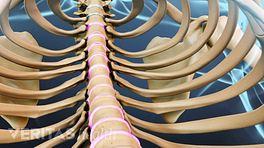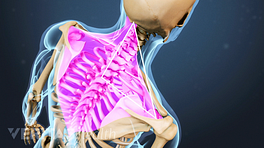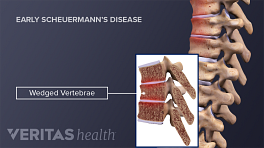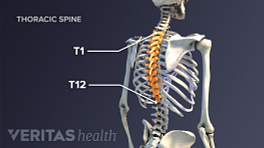The thoracic spine is the longest region of the spine, and by some measures it is also the most complex. Connecting with the cervical spine above and the lumbar spine below, the thoracic spine runs from the base of the neck down to the abdomen. It is the only spinal region attached to the rib cage.
In This Article:
- Thoracic Spine Anatomy and Upper Back Pain
- Thoracic Vertebrae and the Rib Cage
- Thoracic Discs
- Thoracic Spinal Nerves
- Causes of Upper Back Pain Video
The Thoracic Spine: Roles and Functions
The thoracic spine is one of the four major regions of the spine.
The thoracic spine has 12 vertebrae stacked on top of each other, labeled from T1 down to T12. These vertebrae form the foundation of the thoracic region’s sturdy spinal column that supports the neck above, the rib cage, soft tissues, flexible joints, blood vessels, and nerves.
See Vertebrae in the Vertebral Column
Some of the thoracic spine’s most important roles include the following:
- Protect the spinal cord. The spinal cord is a critical bundle of nerves that sends electrical signals throughout the body. It runs from the base of the brain down through the bony vertebral canal of the cervical spine and thoracic spine before branching into smaller nerve bundles in the lumbar spine.
- Anchor the rib cage. The rib cage, supported by the thoracic spine in the back, forms a bony structure to surround and protect vital organs, such as the heart and lungs.
While the cervical spine and lumbar spine are built more for mobility, the thoracic spine is built more for stability.
Thoracic Spine Range of Motion
The thoracic spine has limited front-back and side to side motion capability compared to the cervical and lumbar spine, but allows for more rotation.
While the thoracic spine is less mobile than the neck and lower back, the ranges of motion can vary considerably at different thoracic vertebral levels. Most levels of the thoracic spine have limited forward/backward and side-bending movements but significantly more ability for axial rotation. These dynamics are essentially flipped near the bottom of the thoracic spine with increased ranges of motion for forward/backward and side-bending movements but a reduced ability for axial rotation.
Some experts note that at around the T7-T8 level, the vertebrae gradually become more like lumbar vertebrae in size and shape, allowing for changes in range of motion. These changes in range of motion become even more pronounced at T10-T11 and below, because these levels have ribs that are not attached to the chest wall. 1 White A, Panjabi M. Clinical Biomechanics of the Spine. Philadelphia, PA: Lippincott Williams & Wilkins; 1990.
Common Causes of Thoracic Spine Pain
Upper back pain is typically due to one of the following:
Muscular problems
Upper back pain is often caused by muscular problems.
Upper back pain is most commonly caused by muscle irritation or tension, also called myofascial pain. The cause may be poor posture (such as forward head posture) or any type of irritation of the large back and shoulder muscles, including muscle strain or spasms.
Joint dysfunction
Facet joints can degenerate over time in a process called osteoarthritis.
Thoracic spinal joints can become painful in various ways. For example, cartilage tears and degeneration can develop in the facet joints where adjacent thoracic vertebrae articulate with each other. It is also possible for a rib to become misaligned or displaced from the vertebrae. In many cases, facet joint degeneration (osteoarthritis) and degenerative disc disease can happen at the same time.
Many other possible causes of upper back pain exist, such as a thoracic herniated disc, various types of arthritis, and osteoporosis (vertebral compression fractures).
- 1 White A, Panjabi M. Clinical Biomechanics of the Spine. Philadelphia, PA: Lippincott Williams & Wilkins; 1990.
